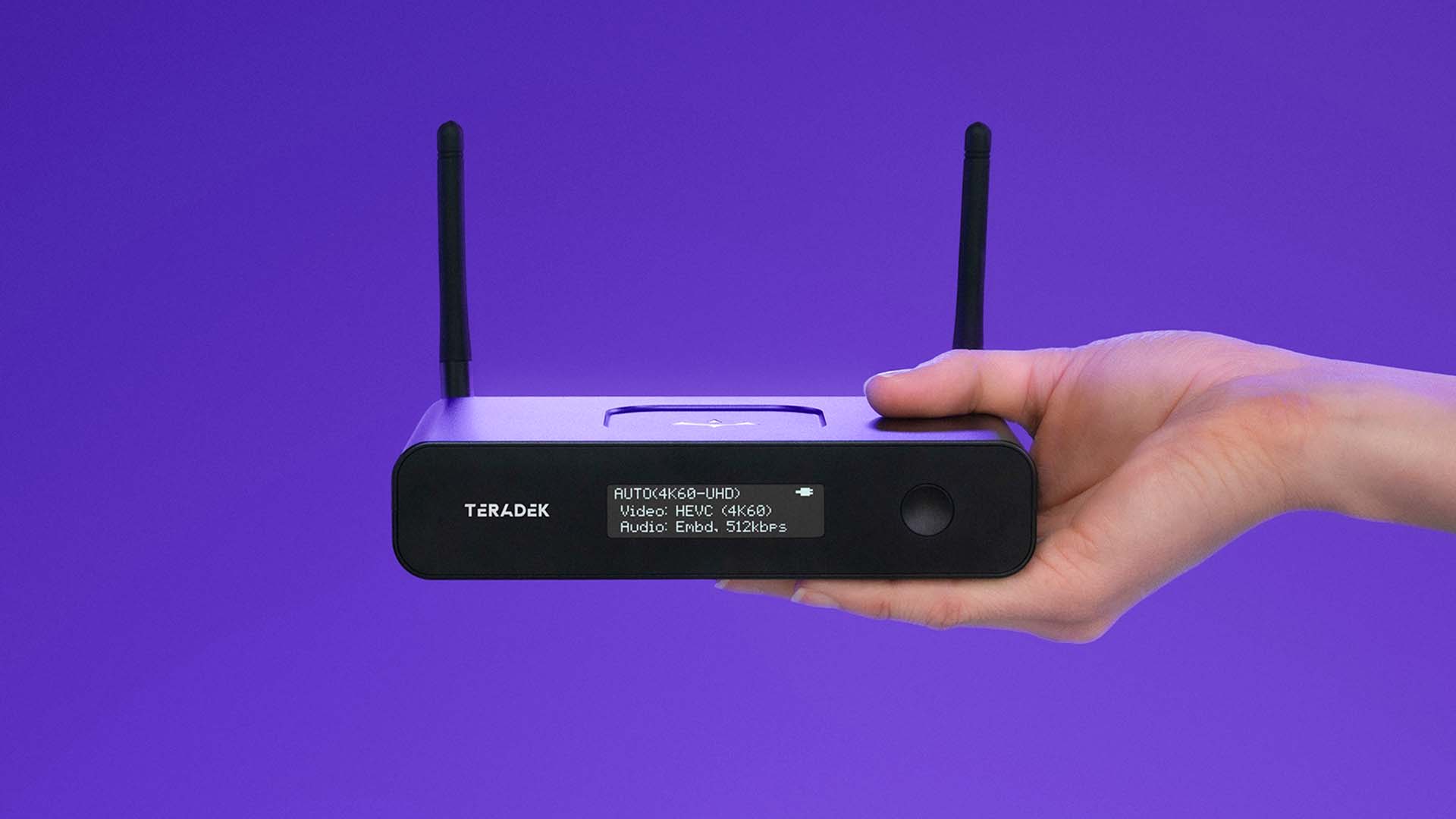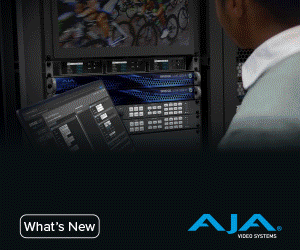Prism 4K - Where remote production becomes reality

You could almost describe today's era as "video everywhere". And it's "everywhere" in different ways to old-fashioned broadcasting. With the proper infrastructure, it's a relatively simple technique to transmit video to multiple users from a television mast. But today's media world is about as far as you can get from that kind of one-to-many video transmission that's existed since the 1930s. What's more, it's changing and posing more challenges almost daily.
The unwanted side effect - Latency
But there's good news. Today's technology has a razor-sharp focus on minimising obstacles to video transmission and distribution - especially for production purposes. It's now possible to build what you could describe as a "fabric" of video interconnectivity, all with - crucially - low latency.
That word, "Latency", crops up like wasps at a picnic when you're talking about video. It's an unwelcome side effect of merely doing anything with digital video. So we'll have a closer look at it and how to mitigate it. Because eliminating latency opens the door to diverse video production applications.
Latency is the delay that occurs when digital video is sent over distances or is processed. You can't avoid delays caused by routing digital video data packets—the more routers or "hops" on the journey, the greater the delay. But modern internet infrastructure is so fast that merely transporting digital video is not the most significant source of delays.
The speed of light is a hard limit. Sending video to the moon and back will always take a minimum of a second and a half. If you're old enough to remember when NASA first captured video of the Ascent Module of the Apollo Lunar Lander, you'll have seen the almost perfectly-synchronised shot of the tiny spacecraft blasting back into orbit from the surface of the moon. The camera was operated by a human watching on earth. But that human, NASA engineer Ed Fendell, wasn't watching the camera; he was watching the clock and knew that because of the 1.5-second round trip for signals to the moon, he had to command the camera to move in advance of lift-off. Getting that right was one of the most remarkable video shots of all time. But that camera operator had the luxury of a highly choreographed sequence of events. If he'd relied on watching through the camera, he'd have missed the shot altogether.
Moon-type latency is thankfully rare (but not that rare, when geostationary satellites are involved), but even much smaller latencies - of even a fraction of a second - can wreak havoc in live productions and in any monitoring situation where fast or definitive responses are required.
Fortunately, the internet itself isn't always the cause of objectionable latency. It's often the on-ramp to the internet that's the biggest problem. That means that equipment manufacturers have a large degree of control over the amount of latency in a signal path.
If we can assume low latency over the internet, what are the opportunities that it offers?
Solution for remote production
First out of the gate is remote production. Getting video from remote cameras is one thing, but controlling those cameras remotely is quite another. A fixed camera shot would present absolutely no problems, but the minute cameras start to move, or several switched cameras are involved, latency gets in the way. The production gallery is physically beside the talent in a conventional TV studio. There's effectively zero latency. Now imagine trying to produce the same programming across the internet - maybe with a distance of several miles between the gallery and the studio. But, of course, the director can only make decisions based on what they see, and that could be several frames after the action takes place. What's more, any instructions from the director will take time to get back to the camera operators. So in a set-up like this, there's double latency.
It's not so bad for talking heads - but what about sports? Then it becomes almost impossible. The remote cameras would never find the ball: they'd miss important events.
Teradek, a company specialising in low-latency remote and internet video transmission, has designed Prism around low latency. The result is a video transmission and streaming technology that is so good that remote production becomes a practical reality, with substantial cost savings.
So what are the savings? They come from several directions, but they originate from a simple advantage: it is much cheaper to provide TV coverage if you don't have to send a production crew to every venue. Another benefit follows immediately: a single production crew can "virtually attend" several events in rapid succession. That's a massive saving over sending a separate production crew to every event.

From a broader perspective, Teradek's expertise provides the ideal on-ramp for remote production and cloud production, where all the traditional elements of TV production are hosted in the cloud. It's a massive trend and will become the norm in a few years. For this to happen, getting high-quality video in the cloud is essential. That means:
- High-quality encoding with modern, efficient codecs like HEVC
- Multi-network bonded uplink solutions
- A suitably high resolution like 4K
- Accurate and deep colour reproduction, including HDR 10 and 4:2:2 chroma subsampling
Streaming 4K
In the early days of streaming, some people used to think that because the end results weren't very good, the production didn't need to be very good, either. With modern technology, it's easy to prove that isn't true - in fact, the opposite is the case.
Streaming, whether for remote production or delivery to end users, requires a complex stack of technology: a sophisticated chain of devices and processing. Program producers have little control over this. For example, YouTubers can't dictate their wishes to the User Generated Content giant. Nor can filmmakers directly influence the likes of Netflix, Amazon Prime, and Apple TV - or a thousand other streaming hosts, large and small.
But they can make sure that the video program source is as pristine and robust as possible. The "first mile" in a streaming operation is crucial to the quality and success of the operation. Every subsequent part of the delivery chain can do a better job because of the high quality of the original video signal.
Teradek's Prism ecosystem can help video creators and producers set up and deliver a wide range of productions and events. With Teradek's cloud-based Core video management platform, you can talk to any Teradek codec and device anywhere in the world while providing a robust, bonded video stream to the cloud. Choose live streaming video or store-and-forward for the best performing video delivery system available. With open (non-proprietary) protocols, including SRT, RTMP(S), and MPEG-TS, you can interoperate with virtually every streaming host and destination.
Prism is adaptable, versatile, and reliable, creating the highest quality streams by expertly encoding high-quality, low-latency video signals. It is the first worldwide video streaming fabric that's ideal for virtual or remote video production.





